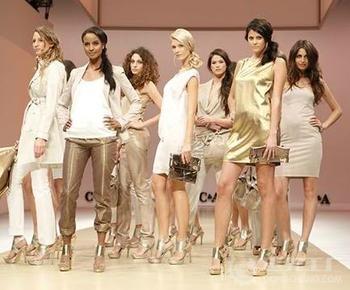Latin American apparel consumption ushered in "golden five years"
 Due to the weak demand in the European and American markets, the competition in the Asia-Pacific consumer market has intensified and the economy has slowed down. Recently, multinational clothing brands have tested the market in Latin America in order to compensate for the slow recovery of Western European and North American markets through the growth of new markets. Euromonitor International's assessment also pointed out that the clothing market with potential in the future will be Latin America. According to data from Euromonitor International, in 2012, Latin American consumer power has gradually emerged. The annual apparel market has increased by 16%. Although the size of the $152 billion clothing market in the region is still less than one-third of the Asia-Pacific market, its growth rate has surpassed that of the latter and shows huge consumer potential.
Due to the weak demand in the European and American markets, the competition in the Asia-Pacific consumer market has intensified and the economy has slowed down. Recently, multinational clothing brands have tested the market in Latin America in order to compensate for the slow recovery of Western European and North American markets through the growth of new markets. Euromonitor International's assessment also pointed out that the clothing market with potential in the future will be Latin America. According to data from Euromonitor International, in 2012, Latin American consumer power has gradually emerged. The annual apparel market has increased by 16%. Although the size of the $152 billion clothing market in the region is still less than one-third of the Asia-Pacific market, its growth rate has surpassed that of the latter and shows huge consumer potential. Latin America has the world’s fastest growing clothing consumer market in 2012 – Venezuela and Argentina, although most of the growth comes from the inflationary price of the product. In Chile, which is experiencing deflation, its clothing prices have fallen by 3% in the actual price war since 2010. Among them, most of the competition comes from local brands. It is undeniable that trade protectionism offers Latin American garment companies a firm foothold in the local market. In Mexico, 4 of the top five apparel brands are local brands.
But in fact, trade barriers cannot completely block the pace of international competitors. In 2012, H&M chose Chile as the foothold to enter the southern hemisphere. On the opening day of the store, nearly 2,500 consumers lined up for 12 hours to welcome this Swedish brand. The Mexican apparel industry also witnessed the achievements of multinational brands in the region. These brands include H&M, Gap and Forever21. The fast-fashion retailer Inditex has its product positioning that is more in tune with Latin American consumers' preference, as its products originate in Spain.
Other mass brands have found that the successful strategy in the Latin American market is to increase the local retail price of the product. The British brand Topshop launched a young girl apparel store at JK, an upscale shopping mall in Sao Paulo, Brazil. The location of the shop, the positioning of the product and the services it provides make the brand's overall image almost extravagant, and thus it attracts more affluent consumers.
In the Latin American clothing market, the online shopping consumption model has just begun. More consumers use social media platforms to understand what they are familiar with, and actual sales are still weak. The sales of this channel is almost no more than 1% of the total apparel industry sales in 2012. Therefore, online channel marketing will be the focus of major brands. In Brazil, the most popular online sales platform is a multi-brand e-commerce website. Netshoes is a website that sells branded sports shoes. In 2012, it had sales of $1 billion in Brazil.
According to Euromonitor International, the Latin American apparel market will expand by USD 35.1 billion in 2012-2017 and will become the most dynamic region following the Asia Pacific region. After surpassing France, before 2017, Brazil's clothing market is expected to exceed Italy's size. Mexico’s performance is also expected to be high. Between 2012 and 2017, the country will be expected to become the fifth fastest-growing clothing market after the BRIC countries. Although protectionism and a complex macroeconomic environment will affect the development of the industry more or less, with the growth of the middle class in the region, young people’s demand for fashion products will increase the value of meeting these challenges. .
Star Sapphire Ingot,Pink Sapphire Ingot,Sapphire Stone,75Kg Sapphire Ingot
ShanXiZhongJuJingKe Semiconductor Co., Ltd , https://www.sxzjjk.com